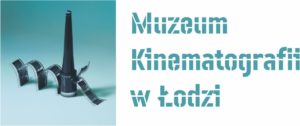The Film Museum in Lodz invites you to the first part of the new permanent exhibition which is devoted to the development of entertainment and cinema from the turn of the 19th and 20th centuries until 1939. The second part of the exhibition – covering the period from 1954 to the present day – has been available to visitors since December 29th, 2021.

Railway, telegraph, telephone, electricity, globalization, cinematograph… The nineteenth-century witnessed changes that brought about rapid modernization. Part of these changes was the emergence of the phenomenon of leisure and the mass culture that catered for this demand. Łódź – a large industrial centre typical of modernity – quickly became a city of attractions with a wide range of entertainments, and it was the cinemas that came to dominate more and more.
Before cinema acquired its own identity as a separate form of entertainment, in the first years of the 20th century, the apparatus known as the cinematograph was used to complement the attractions offered by existing entertainment companies. Film projections were initially grouped together with optical devices popular in the culture of attractions at the time: kinetoscopes, slide projectors called magic lanterns, mutoscopes or devices for viewing three-dimensional photos, such as photoplasticon (Kaiser-Panorama), as well as exhibitions of curiosities and wonders (panopticons) or performances of travelling showmen in cabarets.
The most interesting entertainment offered in the city was provided by cabarets called variétés, which were the progenitors of cinemas. This was the nature of „The Urania” initially situated at 17, Piotrkowska Street (then, on the corner of Piotrkowska and Cegielniana, today’s Jaracza) – one of the largest premises of this type, run by Eduard Julius Vortheil and Teodor Junod, father of Eugeniusz Bodo. The Krzemiński brothers, travelling entertainment entrepreneurs, ran the „Chamber of Illusion” in Piotrkowska Street and then the „Theatre of Moving Images” which is customarily considered the first cinema in Poland. The short films presented there resembled today’s ones only to a small degree: they did not tell complex stories but were rather a „cinema of attractions” composed of views of remote parts of the world, magic tricks, sketches, or stage performances. At that time, the inhabitants of Łódź did not realize that this new technical curiosity would cause a cinema mania and revolutionize the entertainment market.
While the poorer inhabitants of Łódź were having fun in the temporary „mess” exhibited on the occasion of the Pentecost festival in the Water Market, in the vicinity of the Scheiblers’ Palace, today’s Film Museum, the Łódź bourgeoisie spent time in Helenów, an elite garden that was an important place on the entertainment map of Łódź. It was in Helenów, where in 1896, the inhabitants of Łódź had the chance to see for the first time, a new invention – the cinematograph. Among the attractions, visitors could admire a zoo, cycling track racing, and stage shows in a luxurious restaurant.
Entertainment enterprises specializing in offering film projections for a fee, called cinematographs, cinema theatres, and later – cinemas, only began to appear a few years before the outbreak of World War I. That is why it is said that cinema was born twice: first as a technology, then as a separate entertainment institution.
The second part of the exhibition is partially devoted to the achievements of Feature Film Studio in Łódź, Educational Film Studio and the legendary Se-Ma-For Studio. Future adepts of the art of film will certainly be interested in the fragment of the exhibition devoted to students and lecturers of the Film School in Lódź. Using archival materials, we present the path that every young person must follow in the course of education at the Lodz Film School.
The exhibition shows that the film is a collective work. We pay tribute to representatives of various film professions: cinematographers, set designers, editors, stunt performers and pyrotechnics by presenting the objects related to their professions and the final work – a ready cinema or TV film.
Visitors can see fragments of the most famous films made in Łódź. The footage, consisting of excerpts from 21 titles, was edited by Jarosław Kamiński (winner of the Polish Film Award for editing Paweł Pawlikowski’s Ida and the Cold War). We have also prepared a map of locations that „played” in the most famous Polish productions.
The exhibition also includes the following: scenography designs for Kingsajz (dir. Juliusz Machulski) and for Journey (dir. Daniel Szczechura), or costumes for The Hourglass Sanatorium (dir. Wojciech Jerzy Has). Among the personal mementoes of the most famous Polish filmmakers, worth mentioning is camera Aria 16 mm, which belonged to Witold Sobociński, deposited at the Film Museum by Michał and Piotr Sobociński Jr., a range of souvenirs, which belonged to Andrzej Munk, including the script for the film Eroica with the director’s handwritten notes, and Krzysztof Kieślowski’s student index.
Opening hours of the Film Museum in Łódź
Wednesday, Thursday 9:00 a.m. – 4:00 p.m.
Friday, Saturday, Sunday 11:00 a.m. – 6:00 p.m.
Monday, Tuesday – the museum is closed
Price list of the Film Museum in Łódź
normal ticket PLN 15
reduced ticket 10 PLN
ticket for holders of the Łódź Card 10 PLN
ticket for cardholders: Lodz and National Large Family Cards, Lodz Senior Cards, Youth in Lodz, Lodz Library Card, Lodz Card without Barriers PLN 5
Wednesday is the day of free admission to permanent exhibitions
Prices of admission to temporary exhibitions on Wednesday
normal ticket 5 PLN
reduced ticket 3 PLN
ticket for cardholders: Lodz and National Large Family Cards, Lodz Senior Cards, Youth in Lodz, Lodz Library Card, Lodz Card without Barriers 3 PLN
